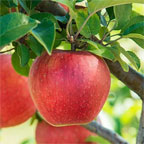Q.What type of fertilizer
Hello, I am a beginning gardener and quite puzzled regarding fertilizers. When I research the right fertilizers for my plants, I get quite clear answers and it all seems to be simple enough. However, the “advised” fertilizers seem to be completely unavailable in my region (I live in central coastal Portugal). For instance no gardening center around here sells a 10-10-10 fertilizer (which seems to be the advice for strawberries and various vegetables I am growing). The 7-9-5 fertilizer adviced for the star jasmin I am growing is alsno nowhere to be found and the online ordering options are also non existent. I suppose my question is how “exact” that fertilizer advice is.
I did find a 4-7-6 or 7-14-18 for the Jasmin. And there is a lot of all purpose fertilizer available (12-8-16, 7-5-6). Ergo: could you help me figure out which fertilizer to use for which plant? Thank you very much in advance. Kind regards, Turid Hoekstra

Thank you so much for that very clear and elaborate answer. This helps a lot!

This is a common concern. Remember that NPK lists relative quantities of each mineral. 10-10-10 has equal amounts of nitrogen, phosphorus and potassium in a 1:1:1 ratio. This is often recommended for container gardening as potting mixes have no true soil and fertility is very low. As long as the ratio is close, the fertilizer is fine. It does not need to be exact. 15-12-12 is close to a 1 to 1 to 1 ratio. The higher the numbers, the less fertilizer you will need to achieve the same results. For instance, you might need a tablespoon (15 ml) of 10-10-10 but only 10 ml of 15-12-12. Follow the package instructions. If you are growing a plant that has lots of green leafy growth, you need higher nitrogen compared to phos and potassium. Corn and tomatoes are good examples. In flowers, too much nitrogen will decrease the number of flowers because the plant is working on leafy growth. Some say that potassium and phosphorus give blooms an extra boost. The evidence for this is marginal. If you are growing in a garden bed, you won't know how much of which fertilizer to add if you don't first get a soil test. If your soils are already, or naturally high in phosphorus, for example, you don't want to keep adding lots of phosphorus. Unlike nitrogen which is added regularly, phosphorus and potassium can build up in the soil to levels that stunt growth. Without a soil test, for vegetables choose a "balanced" ratio. For flowers, go with lower nitrogen - the first number. Use 4-7-6 or 7-14-18 for the jasmine. Fine tuning or customizing your fertilizer requires a soil test first. More information here: https://www.gardeningknowhow.com/garden-how-to/soil-fertilizers/what-is-balanced-fertilizer.htm

